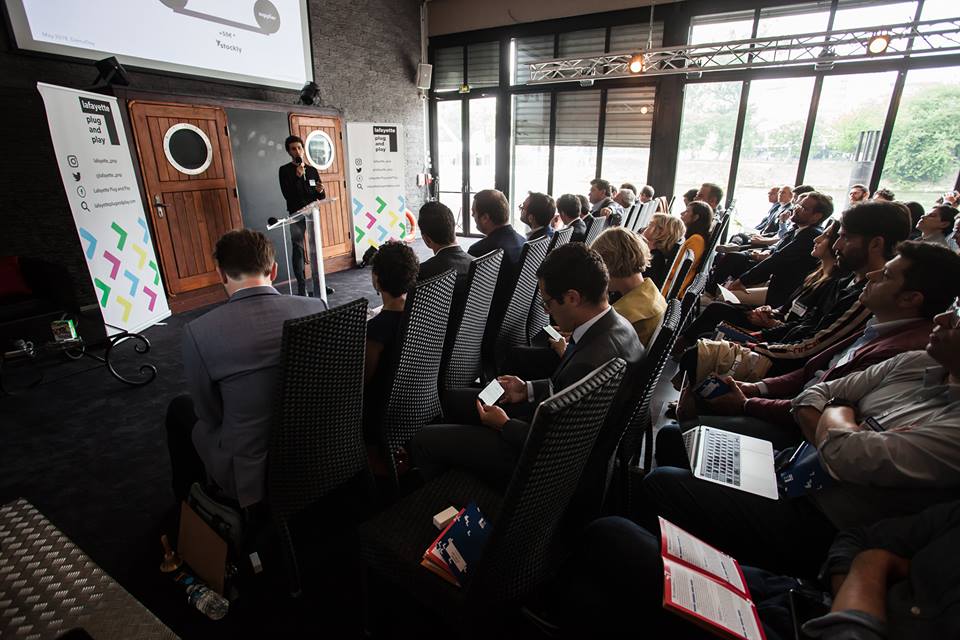Introducing Eliott and Stockly
Q: Could you briefly introduce yourself and Stockly?
A: I’m Eliott Jabes, CEO of Stockly. Our company operates like a stock exchange but for e-commerce websites. The concept is straightforward yet innovative. If a consumer wants to buy a product from website A and it’s unavailable, Stockly steps in. We facilitate the sale and ensure the product is shipped from another website within our network, like website B, which has the same product. This approach creates a seamless shopping experience, overcoming inventory challenges.
Q: What inspired you to create Stockly?
A: The journey began about five and a half years ago in the e-commerce sector, which I ventured into with my co-founder. Initially, we explored various projects and underwent several pivots. The real inspiration for Stockly came from our extensive conversations with e-commerce and physical retail shop owners. We identified that the primary growth barrier for these businesses was access to inventory.
Addressing this, we aimed to create an ‘infinite inventory’ by establishing a network of retailers. We believe in virtually pooling inventory resources, allowing any e-commerce website worldwide to sell products from any other site in our network. This model solves the inventory issue and significantly expands the product availability for consumers.
Why Plug and Play?
Q: Why did you choose to join Plug and Play for your startup?
A: We joined Lafayette Plug and Play at the very start of our journey. They reached out to us during the early months of Stockly. The opportunity was particularly appealing because it was a joint venture in France with Galerie Lafayette, a major retail group. It provided a unique mix of mentorship, investor access, and vital business contacts, especially with French retail giants. The accelerator was deeply involved and keen to test solutions from participating startups like ours.
The Application Process
Q: Can you describe the application process for Plug and Play?
A: The process was quite straightforward. Initially, they contacted us, but there was also an option to apply online. We had an initial call with the accelerator’s director and a junior member, focusing on understanding the seriousness of our project. They requested documents like a presentation deck to gauge interest from corporate partners, who played a role in selecting startups for the program. We then participated in a pitch day among about 30 companies, with only a third getting selected. It was competitive but attainable for startups with a compelling project and commitment.
Q: How competitive was it to get into the program?
A: It was indeed competitive. However, I believe that if you have a relevant solution and are dedicated, it’s feasible to get in. There’s competition, but with a strong belief in your project and full commitment, it’s not an insurmountable barrier.
Daily Life in the Accelerator
Q: What was a typical day like in the accelerator?
A: Our days were a mix of working on our software and participating in accelerator activities. We had regular investor meetings, often structured like speed dating sessions and workshops led by experts. These sessions were optional, which was beneficial, allowing us to focus on what was most relevant to us. Our batch was diverse, with experienced professionals around us, providing a mature and flexible learning environment. There were also occasional social events, adding to the overall experience.
Funding Opportunities and Milestones
Q: Did you receive any funding as part of the Plug and Play program?
A: Initially, there was no direct funding involved in the program; it was completely free. However, at the end of the program, Plug and Play offered to invest in Stockly. We accepted their investment, which was a significant step for us.
Q: Looking back, how do you think the Plug and Play program has influenced your current position and achievements?
A: The program was incredibly beneficial, especially in the early stages of Stockly. In the short term, it greatly facilitated our collaboration with Galerie Lafayette. Being a part of the program made this partnership easier than if we had approached them independently. Working with such a prominent company was a real accelerator for our business, as it was our first time testing our product with a large firm.
It also helped us gain credibility and attract other big clients. In the long term, the connections we made were invaluable. We formed close relationships with other companies from our batch and even those from previous or subsequent batches. The relationships we built with the Plug and Play team, investors, and mentors have been enduring and beneficial for our long-term growth and networking.
Overcoming Challenges
Q: Were there any significant challenges during the program, and how did Plug and Play help you address them?
A: Certainly, there were challenges, which I believe are common for all companies in Plug and Play. The accelerator catered to a diverse range of companies, from very young startups like ours to more established ones. The support we received was tailored to our specific needs at that time. For us, the primary challenge was finalizing our Minimum Viable Product (MVP) and launching it with a major client, a step up from our smaller clients. Another significant hurdle was navigating the complex decision-making processes of large groups like Galerie Lafayette. Plug and Play was instrumental in facilitating these interactions, making the process much smoother and more manageable.
Stockly’s Progress Post-Accelerator
Q: What is the current status of Stockly post-accelerator, and how has the accelerator influenced this?
A: Currently, Stockly is thriving with a team of around 100 members. We’re experiencing significant growth on our revenue, roughly 2.5 to 3 times year on year. While I always aspire for faster growth, our progress is substantial. The accelerator was crucial in kickstarting our journey. Although we now focus on executing our strategies independently, the early boost from the accelerator was invaluable.
Q: Can you talk about the networking opportunities provided by the accelerator?
A: The networking aspect was pivotal. We were introduced to two types of mentors: former entrepreneurs with relevant experience in retail or e-commerce and investors like venture capitalists and professional business managers. We had a choice in selecting mentors, meeting several each week. These connections have been lasting and beneficial, extending beyond the program. I’ve maintained contacts with entrepreneurs and investors through these sessions. These connections continue to be valuable for us.
The Next Milestone
Q: What are the next milestones for Stockly, and do you see a connection to your accelerator experience?
A: Our focus now is on sustaining our growth trajectory, aiming to triple our volume year over year. While it’s been five years since the accelerator, the foundation it provided still resonates in our strategies and approach.
Q: Could you share your ultimate vision for Stockly?
A: My vision for Stockly is to establish it as the central exchange for e-commerce inventory worldwide. We aim to become the universal platform that enables anyone to sell any product seamlessly, without the challenges of purchasing, stocking, and shipping the products themselves. This vision continues to drive our growth and innovation.
Advice for Aspiring Accelerator Participants
Q: Do you have any advice for those applying to Plug and Play or other accelerators?
A: When considering accelerators, it’s crucial to look beyond the brand name, even if it’s as notable as Plug and Play. The real value lies in the people you’ll work with during the program. It’s important to engage directly with these individuals, as they are the ones who will truly impact your journey. Having a renowned accelerator’s logo on your presentation is nice, but it doesn’t bring tangible value to your company.
The structure of the program and the caliber of the people involved are what really matter. Challenge them, assess their understanding of the business, and gauge their intelligence. If you sense that they are knowledgeable and can genuinely contribute to your growth, that’s the right environment to be in. If you have doubts, it’s better to focus on working with intelligent people and seek environments where you are surrounded by those smarter than yourself. This approach can significantly enhance your learning and growth.


